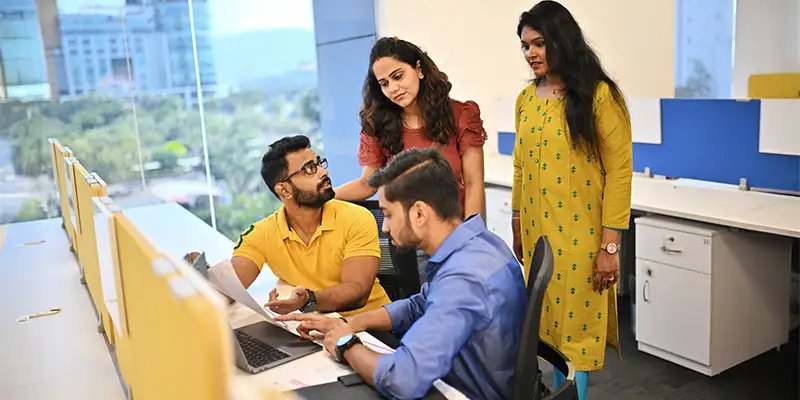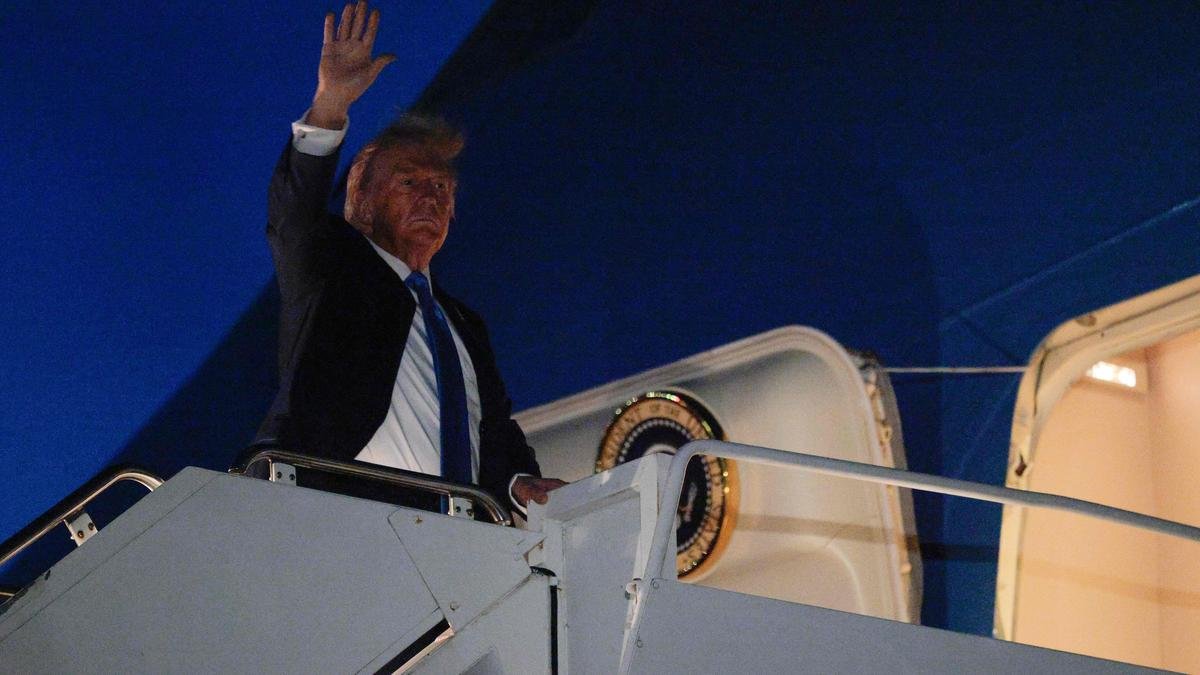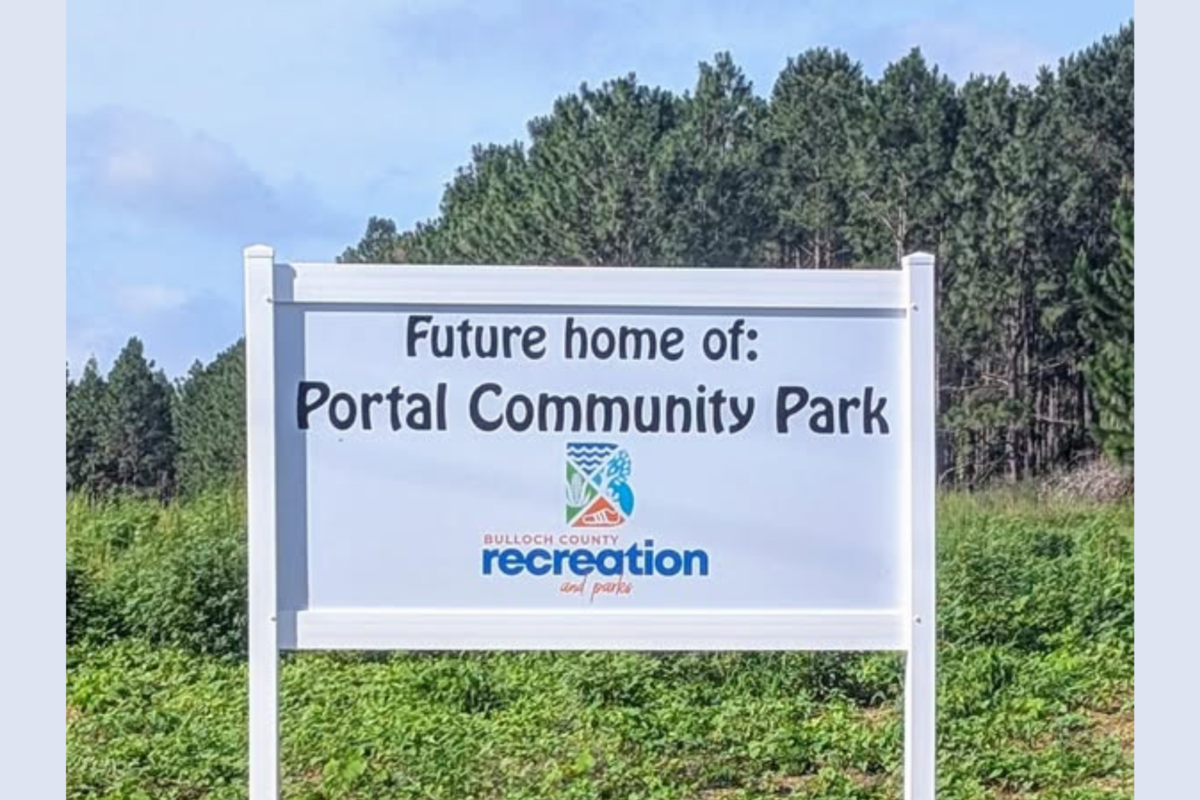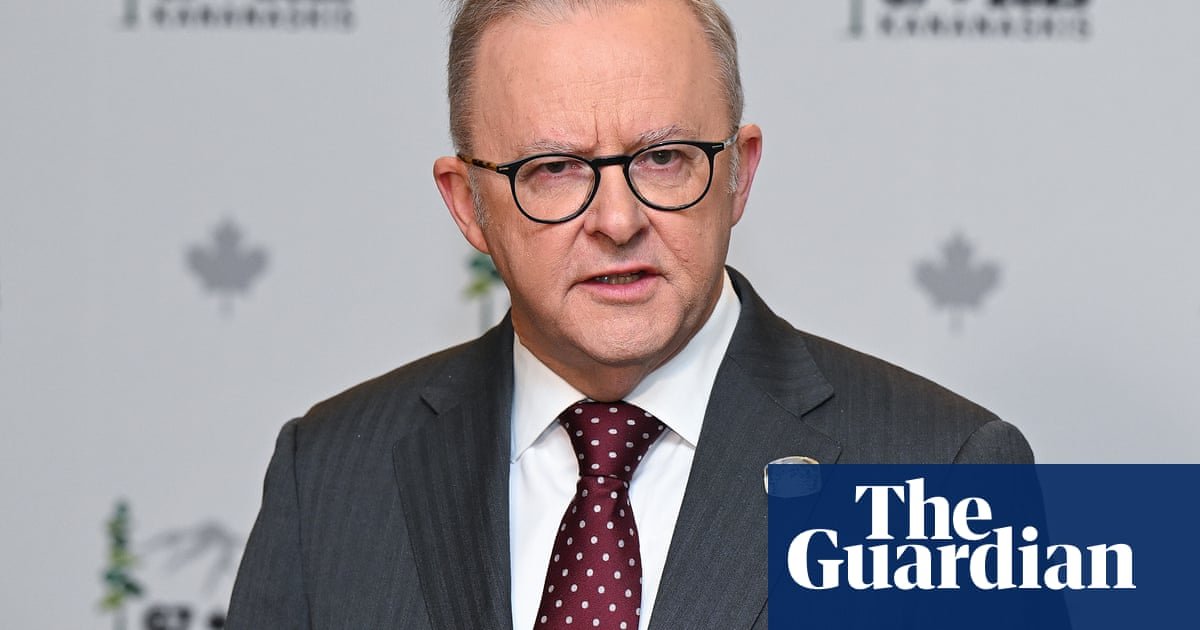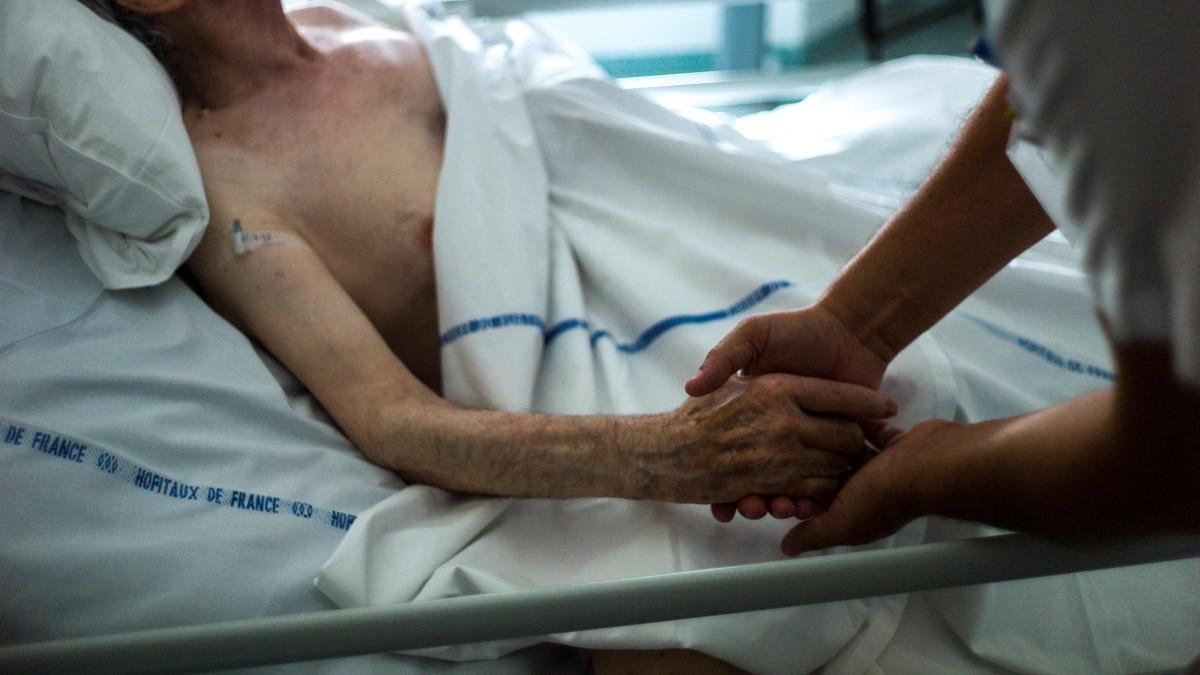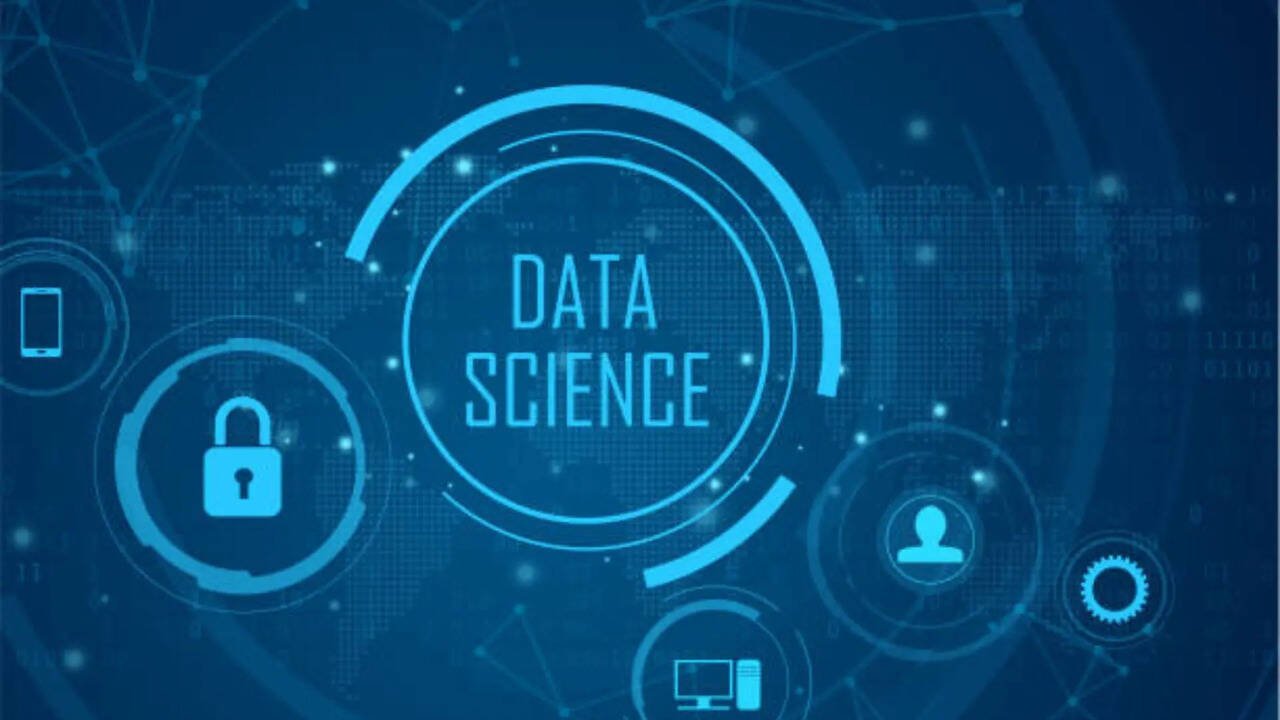Debasmita Dasgupta | Posted June 16, 2025 09:00 AM
The Public Policy departments in several IITs and IIMs are using AI driven technologies and data analytics to understand the demand of various sectors. The students are being trained to effectively use these technological tools to analyse the data collected from all walks of society to develop evidence-based, data-driven methods needed for smart and effective policymaking.
As data and digital technologies continue to reshape governance in India, leading academic institutions are stepping up to train the next generation of policymakers. Through immersive fieldwork, cutting-edge research, and tech-enabled learning, institutes such as IIT Kanpur, IIM Kozhikode, IIM Ahmedabad, and IIM Lucknow are preparing students to formulate stronger policy suggestion designed on evidence-based insights and real-world solutions.
Data as Catalyst
“Data and technology are pivotal in shaping public policies, particularly in urban planning, environmental management, and governance,” says Prof Manindra Agrawal, director, IIT Kanpur. Research at IITs is increasingly influencing national frameworks through collaborations with government agencies like DARPG, UIDAI, and NITI Aayog. Advanced analytics, simulation tools, and AI are central to this transformation.
“India’s public policy is increasingly driven by data and technology to enhance efficiency, transparency, and targeted delivery. From AI-powered fraud detection by IRCTC to digital platforms such as CoWIN, technology is transforming governance. In agriculture and administrative sectors, AI and data analytics support climate resilience, crime prediction, and resource optimisation. Institutions such as IIM Lucknow are equipping students and faculty with data literacy and hands-on experience through research, internships, and hackathons. Experts emphasise that evidence-based, data-driven methods are essential for smarter and more effective policymaking,” says Prof Kshitij Awasthi, chairperson, Centre for Public Policy, IIM Lucknow.
Real-world Impact
At IIM Kozhikode, the Immersive Leadership Discovery (ILD) course allows students to work directly with government bodies such as NITI Aayog, Kerala Rail Development Corporation, and Kochi Smart Mission. “Students are required to submit policy briefs based on extensive fieldwork, stakeholder consultations, and data analysis. These are not academic exercises—they often influence real policies,” says Sthanu R Nair, professor, Economics, IIM Kozhikode. Over the last five years, nearly 150 students have worked on field evaluations in sectors including rural tourism, coir industries, agriculture, and healthcare.
At IIM Ahmedabad, students engage in live policy challenges through capstone projects, independent study modules, and active policy clubs. “We have seen better outcome in data-driven decision making —whether in the Aspirational Districts Programme or PM Ujjwala Yojana,” says Prof. Namrata Chindarkar, Chairperson, JSW School of Public Policy. “Our curriculum uses case-based pedagogy with real-world cases on Aadhaar, cash transfers, and energy access. This grounds students in the realities of rural development.”
At IIT Kanpur, AI and data science are core to public policy innovation. One notable initiative is the Intelligent Grievance Management System (IGMS)—originally developed for the Ministry of Defence, now used by ministries under the PMO for root-cause analysis of citizen grievances. “Our impact goes beyond the lab. We digitised over 5 lakh pages of handwritten anti-corruption records for the UP Police—this is digital governance in action,” says Prof Agrawal. Students also gain exposure to Python, R, Tableau, and Power BI, along with training in causal inference, machine learning, and impact evaluation. The Census Data Research Workstation provides access to digitised census microdata, allowing students to analyse demographic trends and social indicators first-hand.
Policy from Ground Up
To ensure policies can be applied in under-resourced contexts, IIT Kanpur emphasises fieldwork and participatory design. “The AMRIT project teaches students to deploy affordable air quality sensors in rural India. It is not just about tech, but context—how to apply innovation where infrastructure is weak,” says Prof Agrawal.
At IIM Kozhikode, students have undertaken policy studies on Wayanad tourism and Kerala’s e-Health mission, involving grassroots consultations and extensive field immersion.
“The government is increasingly using data and technology to improve the efficiency of welfare programmes,” says Prof Nair. Highlighting initiatives like PRAGATI, PM GatiShakti, and Aadhaar-enabled DBT, he says, “Just the DBT scheme alone has led to savings of around Rs 5 lakh crore.”
Practice-Oriented Training
Institutions are going beyond theoretical instruction. “We train students not just in policy theory but in application—through case studies, hackathons, and rural immersions,” says Prof Awasthi. He cites the MGNF programme, where students helped digitise district-level skilling ecosystems.
“These student-led initiatives supplement and even refine government policies. They provide fresh insights into crime mapping, Aadhaar-based DBT, and climate-resilient agriculture,” he adds.
IIM Ahmedabad continues to develop detailed case studies on the digital divide and transformation in sectors like agriculture, MSMEs, education, and health. “In our Executive Education programmes for government officials, we regularly feature sessions on data-driven decision-making and data visualisation,” says Prof Chindarkar.
Together, these institutions reflect a broader shift in public policy education—towards data-driven, interdisciplinary, and field-immersive approaches.
The latest news, articles, and resources, sent to your inbox weekly.
© Copyright 2025 Bennett Coleman & Co. Ltd. All rights reserved.
Powered By 8 SAS ONE | V4.19
G7 summit LIVE: PM Modi arrives in Canada – The Hindu
June 17, 2025e-Paper
The View From India Looking at World Affairs from the Indian perspective.
Karnataka Today Your daily dose of news highlights from Karnataka
First Day First Show News and reviews from the world of cinema and streaming.
Today's Cache Your download of the top 5 technology stories of the day.
Science For All The weekly newsletter from science writers takes the jargon out of science and puts the fun in!
Data Point Decoding the headlines with facts, figures, and numbers
Health Matters Ramya Kannan writes to you on getting to good health, and staying there
The Hindu On Books Books of the week, reviews, excerpts, new titles and features.
June 17, 2025e-Paper
Updated – June 17, 2025 02:12 pm IST
U.S. President Donald Trump waves as he boards Air Force One after leaving the G7 Leaders' Summit early on June 16, 2025 in Calgary, Alberta. Mr. Trump said he was leaving the summit a day early to return to Washington to try to deal with the conflict between Israel and Iran. | Photo Credit: AFP
Prime Minister Narendra Modi arrived in Canada on Monday (June 16, 2025) to attend the G7 Summit at Kananaskis, his first visit to Canada in a decade, with discussions with world leaders to be focussed on crucial global issues, including energy security, technology and innovation.
Prime Minister Modi will also hold several bilateral meetings on the sidelines of the Summit, coming over a month after India’s Operation Sindoor that had targeted terror infrastructure in Pakistan and Pakistan-occupied Kashmir in retaliation for the April 22 Pahalgam attacks.
The G7 summit comes amidst rising geopolitical tensions, including escalating tensions in the Middle East in the wake of the strikes between Iran and Israel, as well as a trade war triggered by U.S. President Donald Trump’s tariff policies.
Mr. Trump, who arrived in Kananaskis Sunday (June 15, 2025) for the G7 Summit was expected to have bilateral meetings with many world leaders. However, Mr. Trump is abruptly leaving the summit, departing a day early Monday as the conflict between Israel and Iran intensifies and the U.S. leader has declared that Tehran should be evacuated “immediately.”
Read: G7 leaders want to contain Israel-Iran conflict, as Donald Trump calls for talks between countries
The Group of Seven (G7) is an informal grouping of the world’s advanced economies- France, the U.S., the U.K., Germany, Japan, Italy and Canada and the European Union. Its members meet annually at the G7 Summit to discuss global economic and geopolitical issues.
India, the fifth-largest economy in the world, has regularly been invited to the Outreach session of the G7 Summit in the past few years.
The summit is expected to deliberate on pressing challenges facing the globe including the Russia-Ukraine conflict and the situation in West Asia.
U.S. President Donald Trump kicked off his time at the Group of Seven summit by suggesting that Russia and maybe even China should be part of the organisation.
The U.S. leader indicated that he would rather have the G7 become the G8 or possibly even the G9, although Russia and China would notably be authoritarian governments in an organisation whose members are democracies.
Six of the Group of Seven leaders are trying on the final day of their Tuesday to show the wealthy nations’ club still has the clout to shape world events despite the early departure of President Donald Trump.
Prime Minister Mark Carney and his counterparts from the U.K., France, Germany, Italy and Japan will be joined by Ukrainian President Volodymyr Zelenskyy and NATO chief Mark Rutte to discuss Russia’s relentless war on its neighbour.
– AP
U.S. President Donald Trump said his early departure from the G7 summit in Canada had “nothing to do” with a possible ceasefire between Israel and Iran, adding that France’s leader had been “wrong” to suggest otherwise.
Read more:
President Trump denies leaving G7 summit early for Israel-Iran ceasefire, criticizes Macron, emphasizes bigger issues at play.
The Group of Seven nations expressed support for Israel in a statement issued late on Monday and labeled its rival Iran as a source of instability in the Middle East, with the G7 leaders urging broader de-escalation of hostilities in the region.
“We affirm that Israel has a right to defend itself. We reiterate our support for the security of Israel,” G7 leaders said in the statement.
“Iran is the principal source of regional instability and terror,” the statement added and said the G7 was “clear that Iran can never have a nuclear weapon.”
Reuters
G7 leaders on Monday called for “de-escalation” in the Middle East starting with the Israel-Iran conflict, as US President Donald Trump hastily left the group’s summit.
Mr. Trump, who was making his return to the international diplomatic calendar, departed the gathering in the Canadian Rockies a day early as ally Israel pounded Iran.
After a day of statements backing diplomacy, Mr. Trump ominously took to social media to sound a warning to people in the Iranian capital, whose population is nearly 10 million.
“Everyone should immediately evacuate Tehran!” he wrote on his Truth Social platform.
AFP
The Group of Seven nations expressed support for Israel and labeled its rival Iran as a source of instability in the Middle East, in a statement issued late on Monday that called for peace and stability in the region.
The air war between Iran and Israel – which began on Friday when Israel attacked Iran with air strikes – has raised alarms in a region that had already been on edge since the start of Israel’s military assault on Gaza in October 2023.
Reuters
Prime Minister Narendra Modi has said he will discuss important global issues and emphasise the priorities of the Global South as he meets world leaders at the G7 Summit in Canada’s Kananaskis.
Mr. Modi arrived here Monday evening (local time), his first visit to Canada in a decade, with discussions with world leaders to be focussed on crucial global issues, including energy security, technology and innovation.
“Landed in Calgary, Canada, to take part in the G7 Summit. Will be meeting various leaders at the Summit and sharing my thoughts on important global issues. Will also be emphasising the priorities of the Global South,” Mr. Modi said in a post on X Monday evening.
Canadian PM Carney defends inviting Indian PM Modi to G7 summit amid criticism, citing India's economic importance and global influence.
World leaders at the Group of Seven summit in Canada on Monday pushed U.S. President Donald Trump to back away from his punishing trade war, arguing that it poses a risk to global economic stability.
G7 leaders used the meeting to sit down with Trump one-on-one to make their case for the U.S. leader to seal agreements that would eliminate the worse of the U.S. tariff threat.
In official sessions, the leaders also warned Mr. Trump that the tariffs could bring serious harm to the world economy.
“Several participants asked to end the tariff dispute as soon as possible,” a senior German official told reporters on condition of anonymity.
They argued that the dispute weakens the G7’s economies and “in the end will only strengthen China,” the official said.
AFP
President Donald Trump is abruptly leaving the Group of Seven summit, departing a day early Monday (June 16, 2025) as the conflict between Israel and Iran intensifies and the U.S. leader has declared that Tehran should be evacuated “immediately.”
World leaders had gathered in Canada with the specific goal of helping to defuse a series of global pressure points, only to be disrupted by a showdown over Iran’s nuclear program that could escalate in dangerous and uncontrollable ways. Israel launched an aerial bombardment campaign against Iran four days ago.
At the summit, Mr.Trump warned that Tehran needs to curb its nuclear program before it’s “too late.” He said Iranian leaders would “like to talk” but they had already had 60 days to reach an agreement on their nuclear ambitions and failed to do so before the Israeli aerial assault began. “They have to make a deal,” he said.
Asked what it would take for the U.S. to get involved in the conflict militarily, Mr. rump said Monday morning, “I don’t want to talk about that.“
Prime Minister Modi attends G7 Summit in Canada, focusing on global issues like energy security and technology.
Published – June 17, 2025
World / diplomacy / Prime Minister Narendra Modi / Donald Trump / Canada / G7 summit
Copyright© 2025, THG PUBLISHING PVT LTD. or its affiliated companies. All rights reserved.
BACK TO TOP
Terms & conditions | Institutional Subscriber
Comments have to be in English, and in full sentences. They cannot be abusive or personal. Please abide by our community guidelines for posting your comments.
We have migrated to a new commenting platform. If you are already a registered user of The Hindu and logged in, you may continue to engage with our articles. If you do not have an account please register and login to post comments. Users can access their older comments by logging into their accounts on Vuukle.
Leave a Comment
Leave a Comment
Portal’s New Community Park: A space for fun, fitness, and family – Grice Connect
Sign In
Register
Exciting plans are underway for a new community park in Portal, Georgia — a vibrant gathering place designed by and for the community, welcoming people of all ages!
This park will be located just off Clarke Street and aims to offer a variety of recreational activities and opportunities including sports fields for kids, playgrounds for children and a pavilion for friends and family. The new park aims to promote an active, participatory lifestyle while providing a welcoming space for all.
Beyond recreation, the park area could support future expansion of Portal’s afterschool programs and summer camps, creating even more fun and enriching opportunities for youth engagement.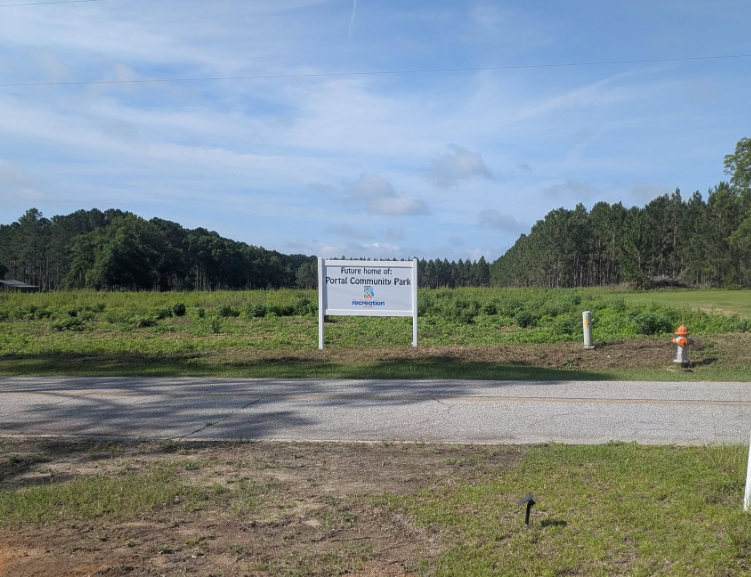
At a May 6 county commission meeting, the board unanimously approved the purchase of the 51.63 acres in Portal for the development of the complex. Recreation Director Dee Cosby explained the site would include ball fields, a barn to convert for maintenance use, and a home that could be transformed into an after-school and summer camp facility for 60 to 70 children.
The site may also support elections and public works use. “We like to tie things in with the schools,” Cosby said, citing its walkable proximity. Commissioners voiced full support, calling it a long-overdue addition for Portal residents.
While an official construction timeline has not yet been released, Bulloch County Recreation and Parks shared their excitement for the park plans, thanking the community for their support and patience as plans continue to develop.
More Spotlight >
More Local News >
© 2025 Grice Connect
Leave a Comment
A boring Trump meeting may be Albanese’s G7 holy grail ahead of possible White House visit later this year – The Guardian
To avoid drawing the ire of mercurial US president, the Australian PM will discuss less Trump-friendly issues with other leaders behind closed doors
Australia news live: latest politics updates
Get our breaking news email, free app or daily news podcast
When Anthony Albanese met his Canadian counterpart, Mark Carney, in Calgary on Sunday, the Australian leader came with an unusual gift.
Along with an Akubra hat, Albanese presented Carney with framed memorabilia from the 1981 Australian film Gallipoli. Directed by Peter Weir, the war story is a favourite of the former central banker. The gift had been arranged with help from Canberra’s National Film and Sound Archive.
The pair had a friendly and constructive meeting ahead of the G7 summit getting under way in nearby Kananaskis in the foothills of the Rocky Mountains on Tuesday Australian time. Albanese and Carney will have scores of meetings with leaders from around the world.
But for both, one event is dominating the agenda. Donald Trump, larger than life in any forum he steps into, landed in Canada on Monday afternoon, Australian time.
With protests and civil unrest at home and a growing war in the Middle East, Trump might be forgiven for not spending much time worrying about Albanese. Trump wants Australia to lift its defence spending and will explain the Pentagon’s review of the Aukus agreement. But even Australian officials on the ground are describing the talks as introductory and likely uncontroversial.
That probably sounds good to Albanese too. Given the experience of leaders being berated in the Oval Office in recent months, boring may represent a huge success.
Sign up for Guardian Australia’s breaking news email
One option being speculated about is Trump and Albanese holding more substantive talks in Washington DC sometime later in the year, possibly tied to a visit to the UN general assembly. Then Albanese could push for an exemption to Trump’s trade tariffs and build a personal relationship with the mercurial US commander-in-chief.
But whatever happens in the picturesque Kananaskis lodge, Albanese’s gentle foreign policy pivot is playing out at this summit.
Like Carney – who said Canada’s old relationship with the US was “over” – Albanese is strengthening key alliances away from Washington to build trade and security buffers for an increasingly unreliable ally.
Australia will hold negotiations on joining a defence agreement with the EU, and Albanese has hinted some of his visit, including a stopover in Fiji, was about pushing back on an expansionist China in the Indo-Pacific.
He will meet the leaders of Japan and South Korea while in Canada, as well as the Nato secretary general, Mark Rutte, the British prime minister, Keir Starmer, France’s Emmanuel Macron and Germany’s Friedrich Merz.
In those closed-door talks, Albanese will talk about less Trump-friendly issues such as the war in Ukraine, Israel’s continuing humanitarian blockade of Gaza, renewable energy, climate change and free trade ties.
Sign up to Breaking News Australia
Get the most important news as it breaks
after newsletter promotion
Trump’s unorthodox approach to governing will have anxiety levels high around the world for the remainder of his second term. Asked if Australia would “stand shoulder-to-shoulder” in the event China invades Taiwan, or if he would raise such a possibility with Trump, Albanese said on Sunday that he would not pre-empt his discussions.
The pair seem to be off to a good start. Shortly after Albanese was re-elected, Trump praised him, saying they had “a very good relationship” and that Albanese had been nice to him.
Like Carney, Albanese has shown signs of boldness in managing the Trump relationship. He has called the tariffs economically reckless and angered the US by signing on to sanctions for two hard-right members of Israel’s cabinet last week.
After Carney presented him with a Stetson cowboy hat, the pair agreed the world becoming more dangerous under Trump meant closer ties were needed between Ottawa and Canberra, as evidenced by an official readout from the Canadian side.
“The prime ministers agreed to remain in close contact,” it said.
Tom McIlroy is chief political correspondent for Guardian Australia
Leave a Comment
Education’s AI Era: Equipping your child to use smart tools responsibly – The Citizen
Not long ago, students studied in analogue: dog-eared textbooks, handwritten notes and the occasional text to an overachieving friend.
Today, many learners are turning to something far more advanced – artificial intelligence. In particular, large language models like ChatGPT are fast becoming study companions for a new generation of learners.
But are these tools enhancing learning or replacing it?
As the world marks Youth Month, Arno Jansen van Vuuren, the managing director at education insurance provider Futurewise, says it is a good time to ask: What does the rise of AI mean for education in SA, and how can parents help their children use it to support, not shortcut, their growth?
“We often call today’s children digital natives, but more accurately, they’re becoming AI natives, growing up with tools that can generate ideas, write essays and respond almost like a human,” he says.
“While some schools were quick to ban these tools, especially early on, enforcing those rules outside the classroom is nearly impossible. AI is evolving faster than policy can keep up, and it’s not going away. These tools are advancing so rapidly that we can’t predict what they’ll look like even a few months from now.
“As parents, we have a key role to play in helping children build healthy, responsible habits around these tools so that they learn with AI, not from it.”
The good: study support at their fingertips
When used correctly, AI can be a powerful learning ally. It helps students break down complex concepts, rephrase difficult topics and generate practice questions or writing prompts. For children too shy to ask questions in class or struggling to focus using traditional study methods, it can be a game-changer.
It’s also available around the clock, offering consistent support during late-night cramming or weekend revision.
The bad: over-reliance and lost thinking skills
“If students begin relying on ChatGPT to think for them, their critical skills may fade. Generative AI doesn’t truly understand topics – it predicts words based on patterns, so learners might copy answers without grasping their meaning. Over time, this can erode both confidence and creativity.
“Think of AI like a calculator. It’s great for speeding things up once you understand the process, but if you rely on it before mastering the basics, you risk losing the ability to solve problems on your own, says Jansen van Vuuren.
The dangers: misinformation, privacy and bias
While ChatGPT can sound convincing, it isn’t always accurate. It can generate false information and, since it draws from data across the internet, may reflect biases or stereotypes.
“There are also privacy concerns. Children might unknowingly share personal information while chatting with AI bots, unaware that this data can be stored or used to train future models.”
He advises parents to remind children never to share personal details and always verify AI-generated facts with trusted sources.
What can parents do?
“The answer isn’t to ban these tools – it’s to build understanding. Start by using AI tools with your child. Explore how prompts work and compare AI responses with their school materials. Encourage questions like, ‘How did you get that answer?’ or ‘Can you explain it another way?’,” says Jansen van Vuuren.
“Discuss ethical use: When is it okay to use AI for help, and when does it cross into cheating? Help your child understand that the goal is to learn, not just to submit the perfect assignment.”
If you’re unsure how to start these conversations, resources like the Futurewise Learning Hub can help. The hub offers interactive tools that promote digital and emotional literacy, covering online safety, academic support and practical ways for parents and children to navigate technology together.
Preparing for the future of learning
AI isn’t going away. As it becomes more embedded in society, it will play a major role in how today’s learners study, work and solve problems throughout their lives. Teaching children to use it wisely is key to future-proofing their success.
“As technology evolves, so must our parenting. Our role isn’t to shield kids from innovation but to help them use it safely and meaningfully. With the right tools and support, parents can turn AI from a threat into a learning advantage.”
![]()
Leave a Comment
Chronic pain must be part of suicide risk assessment, experts say – The Hindu
June 17, 2025e-Paper
The View From India Looking at World Affairs from the Indian perspective.
Karnataka Today Your daily dose of news highlights from Karnataka
First Day First Show News and reviews from the world of cinema and streaming.
Today's Cache Your download of the top 5 technology stories of the day.
Science For All The weekly newsletter from science writers takes the jargon out of science and puts the fun in!
Data Point Decoding the headlines with facts, figures, and numbers
Health Matters Ramya Kannan writes to you on getting to good health, and staying there
The Hindu On Books Books of the week, reviews, excerpts, new titles and features.
June 17, 2025e-Paper
Published – June 17, 2025 07:30 am IST
Evaluating and addressing somatic symptoms — physical symptoms that a person experiences, often without a clear medical explanation for their cause, such as chronic pain, is a crucial component in the care of patients at risk of suicide, particularly those with depression, anxiety, or somatic symptom-related disorders, say experts. |Image used for representational purpose only | Photo Credit: AFP
In many parts of India, people live with chronic pain and often present it to doctors as a physical symptom for a medical solution. But when the pain persists — what does it do to one’s mind?
When patients say, “I can’t take this anymore,” the focus often shifts solely to their mental health, missing the underlying physical distress that has been building up for months or even years.
According to the World Health Organization (WHO), India had a suicide mortality rate of 16.5 per 100,000 population in 2016 — significantly higher than the global average — with chronic pain emerging as a key risk factor contributing to these deaths.
A growing body of scientific literature, including a recent Lancet Psychiatry study, urge the inclusion of chronic pain as an independent risk factor for suicide in formal risk assessment models. Despite strong neurobiological and epidemiological evidence, chronic pain remains absent from most standardised suicide screening tools — creating a significant blind spot in clinical practice.
This omission has far-reaching consequences in India, where large segments of the population experience undertreated or unrecognised chronic pain, often without access to psychological support or palliative care — especially in rural and underserved regions.
According to Ramdas Ransing, associate professor of psychiatry at AIIMS Guwahati, the relationship between chronic pain and suicide risk is complex and bidirectional — chronic pain can raise the risk of suicide, while individuals at risk of suicide may be more likely to present with somatic symptoms like persistent pain
“Any pain lasting more than three months is defined as chronic,” says Prarthana Saraswathi, consultant psychiatrist, Rela Hospital, Chennai. “But pain is not just a physical sensation. It’s deeply emotional, especially in contexts like India, where mental health stigma and weak pain management infrastructure leave many patients unsupported.”
Studies from National Institute of Mental Health and Neurosciences (NIMHANS) show a high prevalence of depressive symptoms, hopelessness, and suicidal thoughts among those living with chronic pain. Yet, chronic pain is rarely documented in clinical settings as a psychological concern.
“The focus is overwhelmingly on pain as a bodily issue. Its emotional toll is simply overlooked,” Dr. Saraswathi notes. This often leads to patients expressing passive death wishes rather than overt suicidal ideation. Phrases like “I wish I wouldn’t wake up” or “I’m just a burden to my family” are common — especially among women suffering from chronic arthritis or lower back pain who feel unable to fulfil caregiving or household roles. Similarly, men with histories of physical labour, upon reaching old age and experiencing immobility, may struggle with self-worth, increased dependence and deepening isolation.
Despite these associations, most widely used suicide risk tools — such as the Columbia-Suicide Severity Rating Scale and the Beck Depression Inventory — do not include chronic pain as a risk factor, focusing instead on psychiatric symptoms, substance use, and history of self-harm.
“Suicide screening models are still operating through a narrow psychiatric lens,” says Dr. Saraswathi. “They exclude chronic pain because it’s traditionally considered a medical problem.”
This disconnect creates a critical gap in assessment. “Many tools fail to flag high-risk individuals because chronic pain isn’t part of the checklist,” says Mithun Prasad, consultant psychiatrist, SIMS Hospital, Chennai. “But in clinical practice, people with relentless, treatment-resistant pain are more likely to suffer from depression, emotional fatigue, and sometimes suicidal thinking — especially when pain disrupts sleep, social life and a person’s sense of dignity.”
There is growing recognition that chronic pain and suicidality share overlapping neurobiological mechanisms, involving emotion-regulating circuits such as the anterior cingulate cortex and prefrontal cortex. International studies suggest that even without a formal psychiatric diagnosis, pain alone can significantly increase suicide risk– making its exclusion from screening protocols a serious oversight.
“Pain doesn’t just live in the body– it seeps into a person’s identity and their ability to engage with life,” explains Dr. Prasad. “People stop planning for the future. They say things like ‘I’m tired’ or ‘I can’t do this anymore.’ These aren’t casual remarks — they’re red flags.” He adds that many patients carry their emotional burden silently, especially when they fear burdening family members or appearing weak. This is particularly visible in Indian families, where rigid gender roles, caregiving expectations, and economic dependence can magnify the isolation felt by those in chronic pain.
Including pain in suicide risk assessments is not without challenges. “Pain is deeply subjective and varies by etiology — neuropathic, psychological or inflammatory — making standardisation difficult,” Dr. Saraswathi notes. Additionally, clinicians may lack training in pain psychology, while pain specialists may not be equipped to assess suicidality. This lack of interdisciplinary coordination often results in fragmented care and missed warning signs.
There is also a practical burden– adding pain-related indicators could increase consultation time for clinicians already working in overwhelmed systems. Yet, experts agree that the benefits of early identification outweigh these concerns.
In India, socioeconomic vulnerabilities further complicate the issue. “A large portion of the population particularly in rural areas are daily wage workers whose livelihoods depend on physical ability,” says Dr. Saraswathi. “When chronic pain strikes, it doesn’t just cause physical distress. It brings financial insecurity, loss of identity and diminished self-worth induced by social stigma and ableism.”
Yet, suicides triggered by chronic pain are seldom recognised as such in official data. “National Crime Records Bureau (NCRB) reports often cite ‘illness’ as a cause for suicide but don’t disaggregate chronic pain from other medical conditions,” she adds. This under-reporting limits evidence-based policymaking and prevents targeted interventions.
From a public health and policy perspective, including chronic pain in suicide risk assessments could be transformative, says Astik Joshi, child & adolescent and forensic psychiatrist, New Delhi. He advocates for this inclusion across specialties and age groups.
“Pain needs to be acknowledged not just as a medical or psychological issue — but as a biopsychosocial risk factor,” he says. “Suicide assessment models must move beyond psychiatric diagnoses to account for long-term physical suffering, especially when paired with emotional exhaustion, helplessness, and isolation.”
“Suicide risk assessment should be part of the management and follow-up care in every pain clinic,” Dr. Ransing says, adding that evaluating and addressing chronic pain is equally crucial in the care of those with depression, anxiety, or somatic symptom-related disorders.
Experts propose nationwide capacity-building workshops, integrated pain and mental health clinics and routine cross-referrals between pain specialists and psychiatrists. “A national programme that links chronic pain with suicide prevention is long overdue. With proper training and advocacy, this gap is not insurmountable”, say Dr. Saraswathi
Experts suggest a stepwise reform model: beginning with the early identification of pain through orthopaedic and palliative consultations, followed by integrated assessments — where emotional wellbeing is routinely screened alongside physical symptoms. Tailored interventions, including counselling, social support and appropriate medication, can ease both the physical and psychological burden.
( Suicide helplines across the country can be accessed here)
Published – June 17, 2025 07:30 am IST
health / suicide
Copyright© 2025, THG PUBLISHING PVT LTD. or its affiliated companies. All rights reserved.
BACK TO TOP
Terms & conditions | Institutional Subscriber
Comments have to be in English, and in full sentences. They cannot be abusive or personal. Please abide by our community guidelines for posting your comments.
We have migrated to a new commenting platform. If you are already a registered user of The Hindu and logged in, you may continue to engage with our articles. If you do not have an account please register and login to post comments. Users can access their older comments by logging into their accounts on Vuukle.
Leave a Comment
IIT Delhi Launches Certificate Course in Data Science, ML – Times Now
Theme
Latest
Entertainment
India
Sports
Business
World
Lifestyle
Tech
Education
Viral
Cryptonow
Updated Jun 16, 2025, 15:09 IST
(Representative Image)
Professionals & enthusiasts who write about politics to science, from economy to education, from local issues to national events and global affairs, t…View More
news
education
Follow us :
© 2025 Bennett, Coleman & Company Limited
Leave a Comment
Leave a Comment
NMHS ends United Healthcare Medicare Advantage plans – selfemployed.com
North Mississippi Health Services (NMHS) has ended its contract with United Healthcare for certain Medicare Advantage plans. The change took effect on June 1. The decision comes after more than a year of talks between NMHS and United Healthcare.
NMHS operates eight hospitals and over 70 clinics in North Mississippi. United Healthcare is the nation’s most profitable health insurance company. About 17,000 United Healthcare Medicare Advantage members live in NMHS’s service area.
Most of them are existing patients, said Wally Davis, NMHS’s vice president of payor strategy and partnerships. Other United Healthcare plans will still be in-network at NMHS. These include commercial and employer-sponsored, Marketplace, Medicaid, and CHIP plans.
The change will also apply to Medicaid-required Dual Special Needs Medicare Advantage plans. NMHS ended the agreement because Medicare Advantage inpatient claims were often delayed or denied, Davis said. The issue has gotten worse since NMHS first raised concerns last year.
In May, 42% of inpatient claims at North Mississippi Medical Center-Tupelo were initially denied. This is up from 17% in February 2024.
The overturn rate has stayed around 85% since last year. “We continued conversations about the core problem, which has been the denial percentage itself, but we never really received a clearly defined response from United as to why those denials were occurring,” Davis said. United Healthcare suggested extending the current contract to keep talking, said Tracy Carr, a spokesperson for the company.
“Unfortunately, NMHS refused,” Carr said. Patients with United Healthcare Group Retiree Medicare Advantage plans will still be able to get services at NMHS locations. These plans offer out-of-network benefits.
Patients’ share of the cost will be the same as if they were part of the network for some or all services, according to Carr. United Healthcare members who are in the middle of treatment with an NMHS provider for a serious or complex condition may be able to keep getting covered services for a period of time, Carr said. Davis encourages patients to contact Medicare to discuss options for changing their Medicare Advantage enrollment.
This includes during the special enrollment period. Medicare’s open enrollment period is from Oct. 15 to Dec.
7. There is an additional open enrollment period for those already enrolled in Medicare Advantage Plans from Jan. 1 to March 31.
Learn more about us.
Led by editor-in-chief, Stephanie Johnson, we take great pride in the quality of our content. Our writers create original, accurate, engaging content that is free of ethical concerns or conflicts. Our rigorous editorial process includes editing for accuracy, recency, and clarity.
Learn more about our process.
Join the ‘Self Made’ newsletter, earn more with freedom, and discover true wealth.
SelfEmployed.com is an independent, advertising-supported publisher and comparison service. We are compensated in exchange for placement of sponsored products and services, or by you clicking on certain links posted on our site. Therefore, this compensation may impact how, where and in what order products appear within listing categories, except where prohibited by law for our mortgage, home equity and other home lending products. Other factors, such as our own proprietary website rules and whether a product is offered in your area or at your self-selected credit score range, can also impact how and where products appear on this site. While we strive to provide a wide range of offers, SelfEmployed does not include information about every financial or credit product or service.
Sign in to your account
